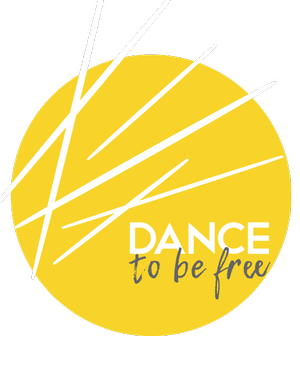Dancing To Be Free: A Conversation with Lucy Wallace
This summer, Arianna Maysonave interviewed Lucy Wallace for Nova Institute for Health, which is a heart-centered think tank that takes action for the good of people, places, and the planet.
Below is a snippet from this insightful interview, check out the full article here.
“How did you initially create the vision of bringing dance to incarcerated communities?
Lucy Wallace: I’ve been dancing since I was five years old. I majored in dance but stopped in my 20s and felt completely lost—I had no idea what to do with my life. During this period I also went to graduate school for transpersonal psychology at Naropa University and found my way back to dance again. I found an incredible teacher in Boulder and fell back in love with this medium of expression. Eighteen years ago, in 2007, I became a dance teacher (something I never thought I would do!), and then in 2010, I had the opportunity to purchase the studio in Boulder, Colorado, where I had been teaching. In an effort to diversify our offerings, I stumbled upon the idea to build out a nonprofit arm of our work.
One day, during a completely unrelated meeting, a colleague suggested that I bring dance to women in prison. In that moment, I knew without a doubt that this was what I was meant to do. I had no idea where to start, but the dance community was unbelievably supportive. In 2015, I bought the name Dance To Be Free and was able to get nonprofit status in a month. Soon after, we connected with Denver Women’s Correctional Facility and were able to pilot our programs with one-hour dance classes. During this experience, one of our board members pondered, “What if we teach them how to teach?” That possibility led to our first dance teacher training program in January 2016. From there, we expanded to La Vista in Pueblo, Colorado, followed with expansions to Nebraska, Arkansas, and Mississippi. We are celebrating our tenth anniversary this year, and up to this point we’ve worked in 24 prisons in 13 states and have even expanded our programming to include men. Today we have active programming in Arkansas, Colorado, Nebraska, and Tennessee.
What is it about dance that you feel is different from other interventions? Why is it so impactful?
Lucy Wallace: Most of the people we work with have endured severe trauma. When you’re traumatized, you feel out of control of your own body. Gabor Maté has said that some of the most traumatized people in our society are in prisons—many have a history of severe abuse and now exist in a state of constant nervous system dysregulation. Dance allows them to reclaim a sense of agency over their bodies, to experience freedom even within confinement. There is no expectation to be perfect or performative—it’s about letting go, moving freely, and being fully in the moment.
Dance integrates movement into the stuckness of prison life. It is the perfect trifecta—connecting movement, community, and music. When you’re incarcerated, everything is linear and confined—you walk in lines and live in a box. Dance invites fluidity and freedom, allowing one to feel in control of their body and in a place of empowerment. It allows people to experience joy, to make mistakes, to let go. Many of the people we work with share that they never had permission to express themselves as children, and that this free-form way of moving is deeply healing. The integration of journaling, reflection, and sharing also supports participants in their healing journey.
In addition to dancing, our program incorporates powerful writing prompts as part of our workshops. These include deep, provocative questions like, “What are you allowed to express when you’re dancing that you couldn’t as a child?” I recall one participant sharing,“I feel like I’m an onion being peeled without even knowing I’m being healed.” That’s the magic of dance—it bypasses the intellectualizing and goes straight to the body, where trauma is stored.”
